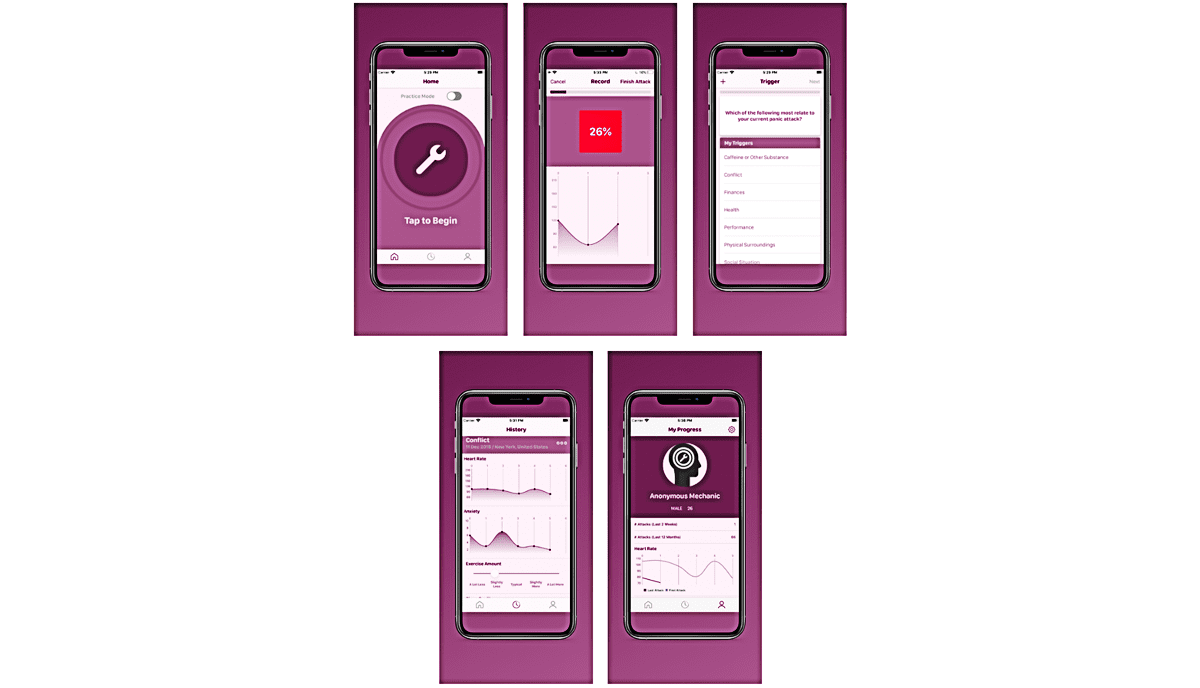One of the trickiest things about panic attacks is that they often occur out of the blue, leaving people that experience them feeling out of control. A new study – which is yet to be peer-reviewed – highlights how individuals can track their moods to retrospectively identify triggers, and how potentially triggering events in the wider world can be tracked at the same time using social media posts.
A team of researchers, led by Dr Ellen W. McGinnis at the University of Vermont, wanted to investigate factors associated with the onset of panic attacks. They used a smartphone app they developed called PanicMechanic, which was previously evaluated in a pilot study. Users can activate the app when a panic attack starts; it collects heart rate data, allows users to log any anxiety triggers, and talks users through a panic attack with encouraging messages.
“In our last study, we heard from participants that although using our app PanicMechanic felt helpful in managing their panic symptoms, they also had a hard time remembering to open an app when they started having an attack,” McGinnis, along with co-authors Dr. Ryan McGinnis and Dr. Chris Danforth, told IFLScience. That feedback is behind the new study, recently posted as a preprint.
The new study “aimed to identify predictors of panic attacks, with the idea of ultimately helping people prepare for their attacks, intervene more effectively, and potentially to prevent them completely in the future.”
The team recruited adults who regularly experience panic attacks from across the US, 87 in total. Participants were asked to provide their Apple Watch data and complete a survey every day for a month, plus use the PanicMechanic app whenever they had a panic attack.
“Since we had the aim of identifying why panic attacks are triggered, we really needed to follow people where they were experiencing panic attacks in their everyday lives,” McGinnis explained. “So every day for a month, we know if they had a panic attack, and what kinds of behaviors they engaged in (like having caffeine, exercising, or having an argument with someone).”
However, it’s not only individual factors that can cause a panic attack. People are also unavoidably impacted by the world around them, and the team had an ingenious way of taking those wider factors into account as well.
“The Hedonometer is this very cool tool that some of our colleagues (Drs Chris Danforth and Peter Dodds) developed as an estimate of societal mood, by assessing the valence of words people are using on Twitter that day,” McGinnis told IFLScience. “We pulled this data into our study, to provide a measure of what is going on in the world and how those events are impacting people in the community.”
The results showed that 95 percent of the participants were able to retrospectively identify a panic attack trigger when asked. Common triggers included participants’ physical health, as well as conflicts with family and friends – interestingly, these are not factors that have typically been associated with panic attacks under traditional diagnostic criteria.
As McGinnis explained: “This is consistent with our prior research, but very different from historical criteria of panic attacks (in the DSM [Diagnostic and Statistical Manual of Mental Disorders]) which suggests panic attacks are mostly associated with physical surroundings (crowds) or giving a performance (likely because panic attacks have been studied in relation to panic disorder and agoraphobia).”
The study also found that poor mood, both on an individual level and at a community level – as illustrated by Hedonometer analysis of Twitter activity in the participant’s home state – was the most important predictor of a panic attack the following day.
“We might have expected it was the stressors of the day that were most important instead of mood, which is more indicative of happiness,” said McGinnis. “This may move ideas of intervention more toward increasing that day’s happiness instead of only decreasing stress.”
According to the researchers, over 28 percent of adults in the US report having had a panic attack at least once. McGinnis and the team want to develop tools to improve the quality of life for people who experience what is usually an unpredictable, and often distressing, symptom: “By identifying triggers we hope this research can empower folks, allowing them to anticipate possible attacks and engage in intervention strategies that work for them.”
The team has already used the feedback from the initial pilot study to make improvements to the PanicMechanic app, which is now available to download for free. It’s hoped that soon it may be possible to run a more comprehensive randomized controlled trial.
The preprint is available to read at medRxiv.
Source Link: Panic Attack Triggers Could Be Predicted By Tracking Mood And Monitoring Twitter
